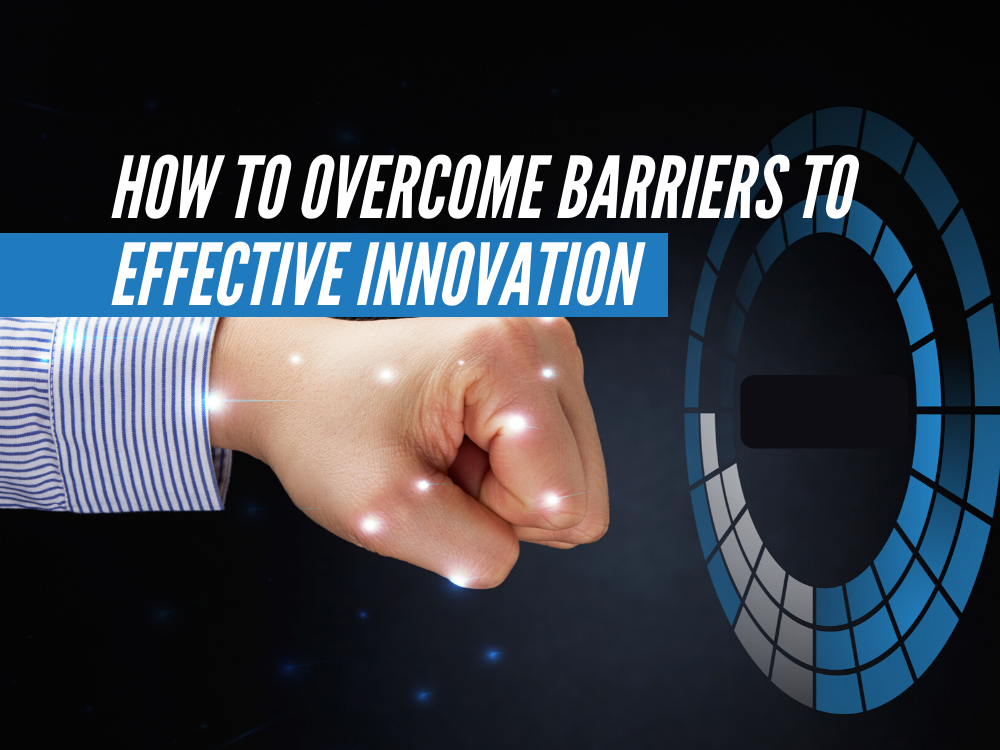Understanding how important innovation is for the success of your business yet still not being able to achieve effective innovation company-wide is very frustrating. Building a profitable and sustainable innovation strategy is a step in the right direction, but even a solid strategy can fail if there are internal issues that need to be addressed. Gartner’s 2019 Technology Innovation Strategy Survey uncovered the top five barriers to innovation: employees focused on immediate goals, employees resistant to change, compliance restrictions, executive resistance, and lack of funding. These hurdles are the most likely to hinder a company from achieving its desired innovation goals. However, every organization can work to eliminate these obstacles. Here are tips on how to overcome barriers to effective innovation.
Prepare and Encourage Employees
Employees cannot be prepared for the future of work if they do not know what to expect. This creates hesitation and the wrong focus as workers attempt to adapt to change while also getting their regular tasks done efficiently. Traditions are powerful motivators to keep the status quo, and past results can lead to closed minds when it comes to new innovation initiatives. Open communication and proper education are essential for overcoming these issues that can lead to unengaged employees. Otherwise, your own staff can be one of the toughest barriers to effective innovation.
Prepare employees by educating them about future trends, training them in key skill areas, and providing helpful resources like open innovation software to make workplace collaboration easier. Encourage employees by helping them present their ideas in a way that others understand and by reinforcing a safe environment for ideas to freely flow. Communicating company goals and strategy to employees is critical, but it is just as important to make sure they are able to voice opinions, concerns, and ideas just as effectively.
Get Leadership on Board
Executives can be even more close-minded to new practices than employees because of the perceived time, money, and risk associated with a transformation. It is true; the ROI of innovation is very difficult to calculate. If a business requires proof of the financial benefit for an initiative, it is likely that innovation will never happen. Risk should be evaluated, but it should not make you resistant to ideas and initiatives with great reward. If employees feel like their leadership will not take their ideas seriously, then executive resistance will create greater employee hesitation. Company leadership is responsible for creating a culture of innovation that encourages ideation.
Getting leadership on board with innovation initiatives helps reassure that there will be a firm commitment to these efforts. Other barriers to innovation include a lack of follow-through and a low adoption rate that result in wasted resources. To prove the value of innovation and gain executive support, there needs to be a strategy. Prepare this strategy by defining innovative success, setting achievable goals and targets, working within constraints while also eliminating constraints, and focusing on activities with the biggest value for success.
Work around Your Resources
Just because everyone in your organization is excited for innovation does not mean the ideal resources are available to make it happen. Some innovation is better than none at all, and getting the process started can make expanding efforts later on easier. It is important to work within your constraints while also making an effort to eliminate those constraints. Employee’s time should be taken into consideration because overwhelming them will lead back to hesitation and resistance. Not taking inventory of your current resources and those required by your strategy could mean abandoning innovation later on.
Long-term goals are important for driving innovation, so do not lose sight of what you want out of innovation even if it is not possible right now. Set short term goals that can be achieved with the current resources. Focus on activities that are low-cost, low-risk, and have measurable value. If an activity is not directly helping you achieve your current goal, then it is probably not worth the current resources. Slowly reshape the company culture into an open, supportive, and innovative environment.
With the right tools and solutions, any barrier to innovation can be conquered. If you are not sure where your innovation problem lies, or if there is a problem at all, then an Innovation Health Checkup might be helpful. It will identify which core areas need development for building effective innovation within your organization. For sustainable innovation practices, learn more about Continuous Improvement Software.
Sources:

